The Sustainable Development Goals Report 2021 revealed the devastating impacts of the COVID-19 crisis on implementation of the Sustainable Development Goals (SDGs). Although the report pointed out that insufficient official data sources made it difficult to obtain a detailed and accurate picture of progress towards the SDGs in real time, it identified a number of areas that required urgent and coordinated action. More data are now available to assess the impact of the pandemic on labour markets. While the picture is gradually becoming clearer, the outlook is by no means any brighter.

The working poverty rate increased in 2020 for the first time in two decades
The proportion of working poor had been steadily declining worldwide, from 26.1 per cent in 2000 to 6.7 per cent in 2019; however, the COVID-19 pandemic disrupted this trend. In 2020, the global share of workers living with their families below the international poverty line increased for the first time since 2000 (when the data series begins), reaching 7.2 per cent, which translated into an additional 8 million workers living in poverty compared with 2019. Although the working poverty rate decreased slightly in 2021, at 6.9 per cent it was still higher than the pre-pandemic rate.
The share of the working poor increased in all regions in 2020 except in Europe and Central Asia, where the low rate of 0.3 per cent from 2019 remained unchanged. Although the rates decreased in 2021 for some regions, most have still not reverted to their 2019 levels. Only Asia and the Pacific managed to bring its working poverty rate down to 2.9 per cent since the onset of the pandemic. Meanwhile, the two regions with the highest working poverty rates – Africa and the Arab States – experienced the largest increases in the past two years, by over a percentage point each. Unsurprisingly, the share of working poor remains alarmingly high in low-income countries, where over 40 per cent of those employed live in poor households.
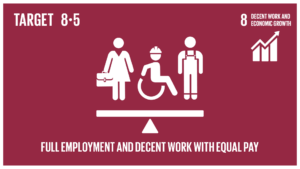
Unemployment is projected to remain above its pre-pandemic level until at least 2023
In 2021, the global unemployment rate declined slightly to 6.2 per cent, which is still well above the pre-pandemic rate of 5.4 per cent. This translates into 28 million more unemployed persons in 2021 than in 2019. The ILO projects that unemployment will remain above its 2019 level until at least 2023. However, it should be noted that the level of unemployment does not capture the full employment impact of the crisis, since many who left the labour force have not rejoined it subsequently. The inactivity rate was 41.0 per cent in 2021, 1.5 percentage points above the 2019 rate. This translates into 147 million more people outside the labour force, a number that is expected to keep growing. Moreover, the unemployment rate does not reflect the reduction in working hours for those who remained employed. In 2021, 4.3 per cent of global working hours were lost relative to the fourth quarter of 2019, which is equivalent to a deficit of 125 million full‑time jobs (assuming a 48‑hour working week).
The labour market groups that were affected disproportionately by the crisis – women and young people – are now recovering the slowest. Thus, the unemployment rate for women stood at 6.4 per cent in 2021, a mere 0.1 percentage points lower than in 2020, whereas among men it declined by 0.6 percentage points over the same period.
Similarly, young people continued to report higher unemployment rates than before the pandemic in 40 out of 46 countries with available quarterly data for 2021. Furthermore, there is now evidence that people with disabilities were hit harder as well. This is troubling, since their unemployment rate was already higher than that of people without disabilities in most countries. Moreover, they are less likely to participate in the labour market. The (unweighted) average difference between the unemployment rates of people with and without disabilities in the 25 countries with available data jumped from 1.2 percentage points in 2019 to 2.1 percentage points in 2020.
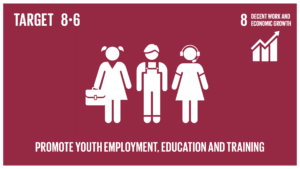
The share of young people not in employment, education or training reached an all-time high
The proportion of young people worldwide not in employment, education or training (NEET) is now at its highest level since 2005 (when the series begins). The deadline for SDG target 8.6, namely to substantially reduce the youth NEET rate, was 2020. Clearly, that target was not met.
The youth NEET rate had remained unchanged from 2015 to 2019, hovering around 22 per cent throughout, but it increased to 23.3 per cent in 2020. This represented an increase of almost 20 million young people in that unenviable situation. The pandemic and associated containment measures disproportionately blighted employment opportunities for young people, and also their education and training prospects. Although young people made up only 13 per cent of total employment before the crisis (2019), they accounted for 34.2 per cent of the decline in employment in 2020. Significantly, technical and vocational education and on-the-job training all suffered massive disruption, forcing many young people to abandon their study and training programmes.
In terms of regions, the NEET rate in 2020 ranged from 15.3 per cent in Europe and Central Asia to 35.6 per cent in the Arab States. Regional disparities are even more striking for young women. Across all regions, young women were much more likely to find themselves excluded from employment, education and training. In 2020, the NEET rate was 31.5 per cent for young women, compared with 15.7 per cent for young men. This gap was the same in 2005, meaning that young women have been more than twice as likely as young men to be jobless and not in education or training over the past 15 years.
The pandemic resulted in a growing number of young people who were neither gaining professional experience through a job, nor developing their skills through participation in an educational or vocational programme. This is likely to have a lasting impact, making it harder for them to transition into the labour market in the coming years. Efforts to reduce youth NEET rates, with a focus on young women in particular, need to be intensified significantly as the world begins to recover from the COVID-19 crisis.
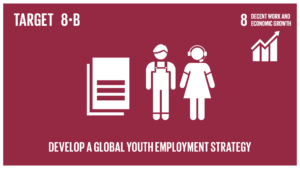
There is a possible glimmer of hope for youth employment
Another SDG target set for 2020, namely target 8.b, was to develop and operationalize a global strategy for youth employment. According to the latest available data (from either 2020 or 2021) for 137 countries, 98 per cent of these had a youth employment strategy or intended to develop one soon. About 41 per cent of the reporting countries (56 countries) had operationalized their strategy for youth employment in either 2020 or 20211Although national strategies for youth employment are typically multi-year, having a strategy in place in a given year does not necessarily imply that it will remain in place the following year. Another 34 per cent (or 47 countries) had a strategy, but there was no conclusive evidence that they were actually implementing it. Lastly, 23 per cent (or 31 countries) indicated that they were in the process of developing a youth employment strategy. It is important to note that data are still missing for numerous countries: improved data coverage could drastically alter the overall picture.

It will take over a hundred years to achieve gender parity in managerial positions at the current rate of progress
As already pointed out, female workers were disproportionately affected by the pandemic. They accounted for 39.4 per cent of total employment just before the pandemic, that is, in 2019, but for nearly 45 per cent of global employment losses in 2020. The inordinate impact of the crisis on women’s employment prospects is especially troubling given the long-standing challenges that women have faced in accessing decent work, including decision-making positions. The share of women in managerial positions worldwide has increased only slightly over the past two decades, namely from 25.3 per cent in 2000 to 28.3 per cent in 2019. It remained unchanged from 2019 to 2020, which was the first year without an increase since 2013. Globally, men continue to dominate decision-making positions such as legislators, senior officials, chief executive officers and other managerial occupations. At the current rate of progress, more than 140 years would need to pass before gender parity is achieved in managerial positions.
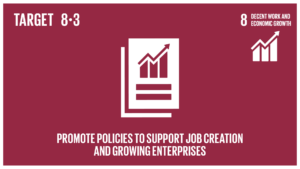
Informal employment often did not play its traditional countercyclical role of absorbing workers displaced from the formal sector
In 2019, 2 billion people worldwide worked in the informal economy, performing jobs that are characterized by low job quality and lack of social protection. In the early stages of the pandemic, informal employment (in countries with dual labour markets) often did not play its traditional countercyclical role of absorbing workers displaced from the formal sector.
New evidence from 29 countries with available data indicates that informal employment was disproportionately affected by job losses in 2020 in some regions. In the Americas, which experienced the largest employment decline of all regions, informally employed workers were almost twice as likely to lose their jobs as their formal counterparts. This may be ascribed to several factors. First, there is widespread informality in the hardest-hit sectors, where lockdowns and containment measures prevented informal workers from going about their work, and where the scope for telework was limited. Second, it is relatively easy to terminate informal employment relationships. Third, informal workers are often employed in smaller enterprises, which have struggled to survive after long periods of inactivity and have had more limited access to support measures, including worker retention schemes.
As economic activity gradually picked up again, informal employment, especially self-employment, experienced a strong rebound in some regions, and many informal workers have returned from inactivity. For example, informal jobs accounted for over 70 per cent of net job creation since mid‑2020 in many Latin American countries.
It is worth noting that a large share of the informally employed are own-account workers who operate their own economic enterprises, or engage independently in a profession or trade, but hire no employees. Contributing family workers participate in family-run activities without any contract or pay, and so they are informal by definition. The faltering of the labour market has pushed many workers to engage in family enterprises instead, resulting in an increase in the incidence of contributing family workers in both 2020 and 2021. This reversed a long-term downward trend. Overall, though, the proportion of own-account and contributing family workers in total employment remained unchanged from 2019 to 2021, hovering around 43.4 per cent.
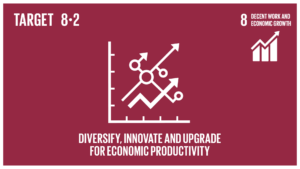
The disproportionate impact of the crisis on small firms led to volatile developments in productivity
Labour productivity, measured as the average output generated per worker (or per hour worked), is a key indicator of the efficiency of a country’s economy and labour market. The impact of the pandemic led to unprecedented, volatile developments in global labour productivity levels. In 2020, the crisis caused sharp decreases in both output and employment, and global output per worker dropped by 0.6 per cent, the first such decline since 2009. However, working hours plummeted by 8.9 per cent – a far greater decrease than the 3.2 per cent decline in employment. As a result, productivity measured on a per-hour basis surged by 4.9 per cent during 2020, more than double the long-run average growth rate.
Fresh evidence suggests that a significant and worrying compositional effect underpinned the surge in productivity per hour worked in 2020: less productive firms and sectors and lower-paid workers were hit disproportionately harder by the crisis, while more productive enterprises and high earners suffered far less damage.
In terms of regions, the Arab States experienced the largest decline in output per worker in 2020, namely −5.4 per cent, followed by Europe and Central Asia at −3.8 per cent. By contrast, in the Americas, which experienced particularly steep employment losses in 2020, output per worker increased by 3.5 per cent during the year.
Preliminary estimates suggest that global output per worker rebounded sharply in 2021, rising by 3.2 per cent. However, productivity in the least developed countries declined by 1.6 per cent during the year. As a result of these dynamics, the productivity gap between developing and advanced economies widened during the pandemic. In 2021, the average worker in a high-income country produced 13.6 times more output than the average worker in a low-income country, up from a ratio of 13.2 in 2019.
The impact of the COVID-19 crisis from a statistical point of view
During the pandemic, at a time when data were most needed, many statistical offices struggled to compile basic statistics, highlighting yet again the need to invest in the collection of data and the production of statistics. This and many other aspects of the impact of COVID-19 are discussed in the three volumes of How COVID-19 Is Changing the World: A Statistical Perspective (Volume I (2020) | Volume II (2020) | Volume III (2021)), compiled jointly by several international organizations under the aegis of the Committee for the Coordination of Statistical Activities.
As far as labour force surveys and labour market statistics are concerned, a global review reveals that differences in practices led to major variations in the impact of the pandemic across regions. Countries relying wholly on face-to-face data collection and those conducting irregular surveys generally reported greater impacts. That being said, all countries encountered major challenges. The ILO Department of Statistics therefore issued a series of technical notes with the general title COVID‑19: Guidance for Labour Statistics Data Collection to provide advice to national data producers on a range of specific issues, including:
- Guidance to Data Producers to Maintain Labour Force Survey Data Collection
- Essential Labour Force Survey Content and Treatment of Special Groups
- Capturing Impacts on Employment and Unpaid Work Using Rapid Surveys
- Defining and Measuring Remote Work, Telework, Work at Home and Home-Based Work
- Consumer Prices Indexes
The COVID-19 crisis also disrupted the ILO’s set of econometric models used to produce estimates of labour market indicators in the countries and years for which country-reported data are unavailable. The model inputs are historical time-series data. The unprecedented labour market shock caused by the pandemic is difficult to assess by benchmarking against such historical data. For indicators related to working hours, a nowcasting model was developed to provide timely estimates, which were featured in the various editions of the ILO Monitor: COVID-19 and the World of Work. However, the ILO is still in the process of updating the methodology for obtaining modelled estimates of other indicators and/or increasing the granularity of estimates already provided, such as sex and age breakdowns.
Authors
-

Marie-Claire Sodergren
Marie-Claire is a Senior Economist in the Data Production and Analysis Unit of the ILO Department of Statistics. She oversees data collection through the annual ILOSTAT questionnaire and coordinates SDG reporting. She spearheaded the development of the ILOSTAT portal and currently oversees content creation and serves as editor-in-chief for the blog. Previously, she held senior roles at the U.S. Bureau of Labour Statistics, including Supervisory Economist and acting Chief of the Division of International Labor Comparisons.
View all posts -

Steven Kapsos
Steven Kapsos is Head of the Data Production and Analysis Unit at the ILO.
View all posts -

Vipasana Karkee
Vipasana is a statistician in the Data Production and Analysis Unit of the ILO Department of Statistics.
View all posts
